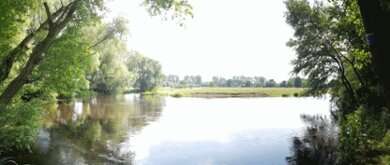Credit: Leiden University
Researchers from Biomon have used DNA techniques to find 40 different species of fish in the river Dommel. This technique is capable of detecting more species than conventional methods of measuring.
Biomon, a consortium of the Institute of Environmental Sciences (CML), Naturalis, KWR and Baseclear, have measured the numbers of different fish species in the Dommel river using so-called environmental DNA, By filtering this eDNA from of the water, the researchers were able to demonstrate the presence of several species of fish. At each measuring location used in the study, eDNA methods detected twice as many species on average as conventional methods of measuring did.
The eDNA is derived from individual cells left behind by shedding animals, as well as excrements and cells from the slime coat of fish, amongst other things. Because every species has unique DNA, it is relatively easy for the researchers to demonstrate the presence of a species. As well as the 40 species of fish that were found, the study was also able to demonstrate the presence of several salamanders, mice and even beavers.
Less invasive
According to Krijn Trimbos, researcher at CML, monitoring using eDNA offers a lot of possibilities. Trimbos: "This technique is much less invasive than electrofishing, which is the current standard method of measurement. Instead of killing and then identifying the animals by hand, all we have to do is take a water sample. By subsequently filtering that water and analyzing the DNA in the lab, we are able to quickly build a clear picture of the species which are present by comparing the samples to reference DNA."
eDNA has been in use for some time already as a way to measure different kinds of micro-organisms in water. In recent years it has also been used to monitor animals. Trimbos hopes that the technique will be used more in the coming years: "Testing for eDNA is a lot less labor-intensive and more cost effective than electrofishing. This gives us the resources to conduct research at several different locations and times, to build a clearer picture of the fish stocks."
Provided by Leiden University
























